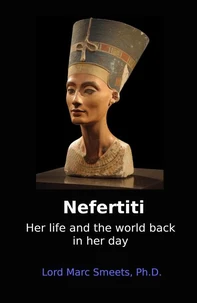Queen Esther is a prominent figure in the Hebrew Bible, specifically in the Book of Esther. She is traditionally regarded as a Jewish queen of the Persian king Ahasuerus, known as Xerxes I in historical records. The story of Queen Esther is set during the 5th century B. C. According to the biblical account, Esther was a young Jewish woman who lived in the capital city of Susa. She was orphaned and raised by her cousin Mordecai.
Through a series of events, Esther was chosen to become the queen of Ahasuerus after his previous queen, Vashti, was deposed. Esther's story revolves around an attempted genocide of the Jewish people by Haman, a high-ranking official in the Persian court. Upon learning of this plot, Mordecai urged Esther to use her position as queen to intercede on behalf of her people. However, approaching the king without being summoned was a risky act that could result in death, even for the queen. Esther, displaying courage and strategic thinking, devised a plan.
She invited the king and Haman to a banquet, where she revealed her Jewish heritage and exposed Haman's plot. Ahasuerus was enraged and had Haman executed. In turn, the king granted Esther and Mordecai the authority to issue a decree allowing the Jews to defend themselves against their enemies. The festival of Purim, which commemorates these events, is celebrated by Jews worldwide. It serves as a reminder of Esther's bravery and the deliverance of the Jewish people from destruction.
The Book of Esther is part of the Hebrew Bible's Ketuvim and is recognized as one of the Megillot, the five scrolls read during specific Jewish festivals.
Queen Esther is a prominent figure in the Hebrew Bible, specifically in the Book of Esther. She is traditionally regarded as a Jewish queen of the Persian king Ahasuerus, known as Xerxes I in historical records. The story of Queen Esther is set during the 5th century B. C. According to the biblical account, Esther was a young Jewish woman who lived in the capital city of Susa. She was orphaned and raised by her cousin Mordecai.
Through a series of events, Esther was chosen to become the queen of Ahasuerus after his previous queen, Vashti, was deposed. Esther's story revolves around an attempted genocide of the Jewish people by Haman, a high-ranking official in the Persian court. Upon learning of this plot, Mordecai urged Esther to use her position as queen to intercede on behalf of her people. However, approaching the king without being summoned was a risky act that could result in death, even for the queen. Esther, displaying courage and strategic thinking, devised a plan.
She invited the king and Haman to a banquet, where she revealed her Jewish heritage and exposed Haman's plot. Ahasuerus was enraged and had Haman executed. In turn, the king granted Esther and Mordecai the authority to issue a decree allowing the Jews to defend themselves against their enemies. The festival of Purim, which commemorates these events, is celebrated by Jews worldwide. It serves as a reminder of Esther's bravery and the deliverance of the Jewish people from destruction.
The Book of Esther is part of the Hebrew Bible's Ketuvim and is recognized as one of the Megillot, the five scrolls read during specific Jewish festivals.

 , qui est-ce ?
, qui est-ce ?